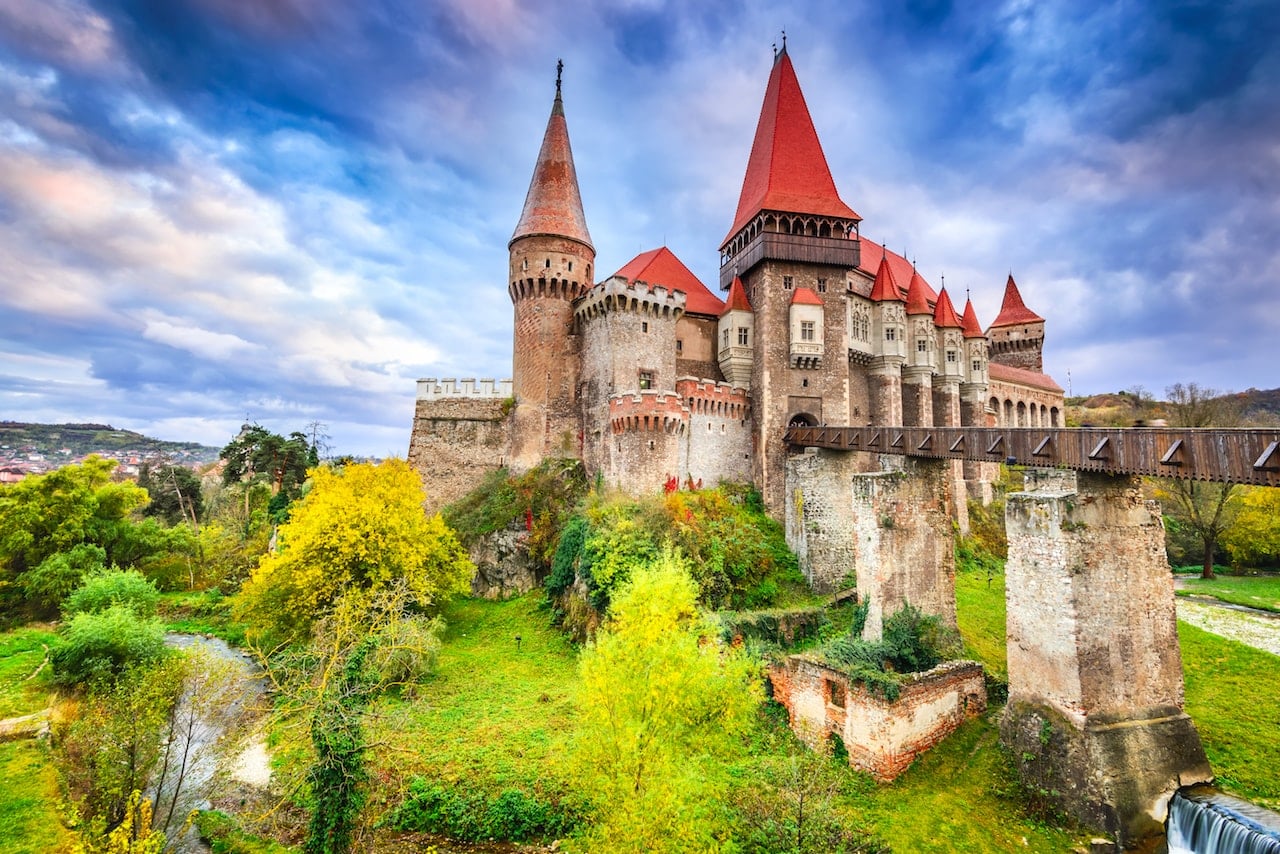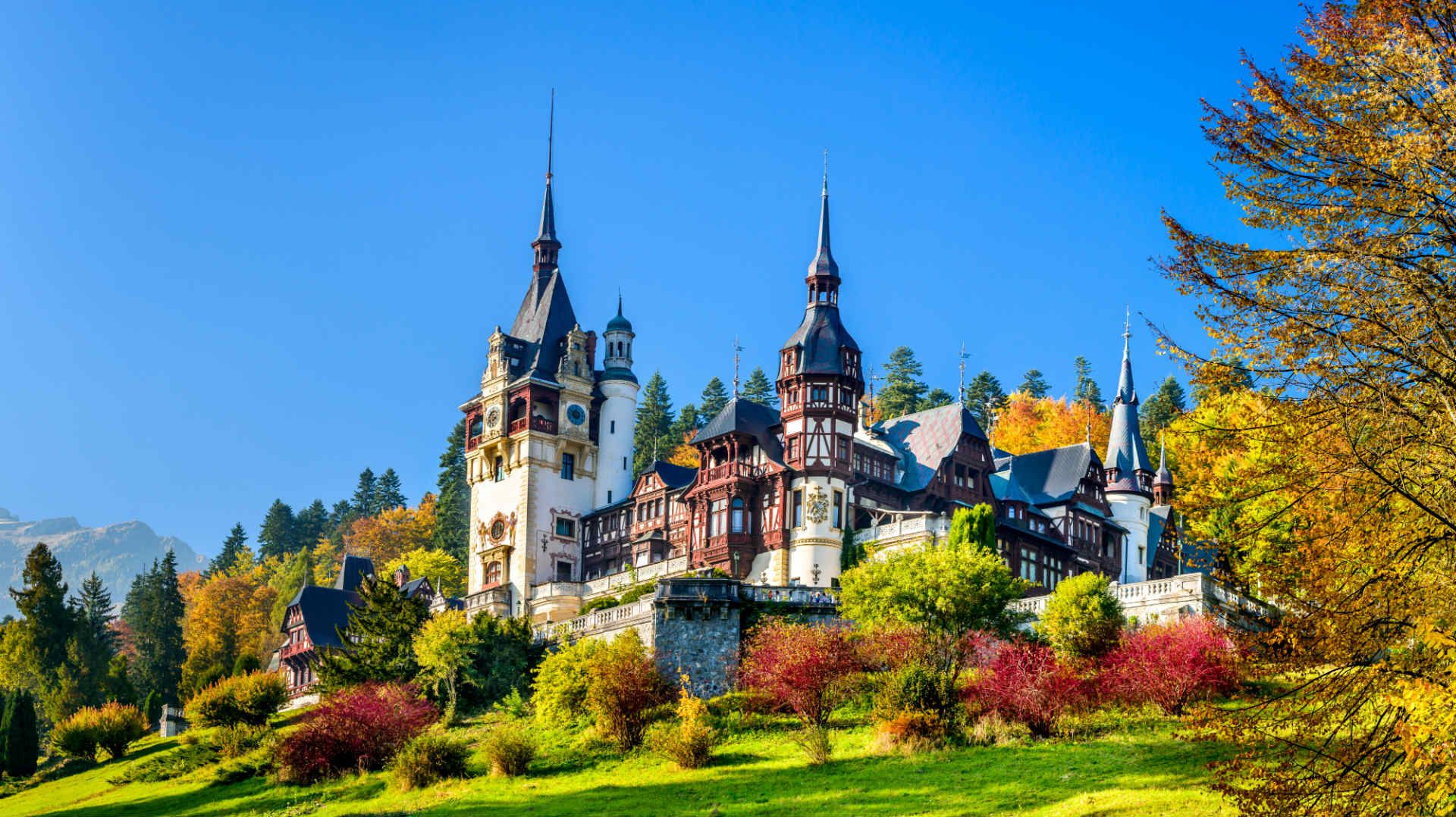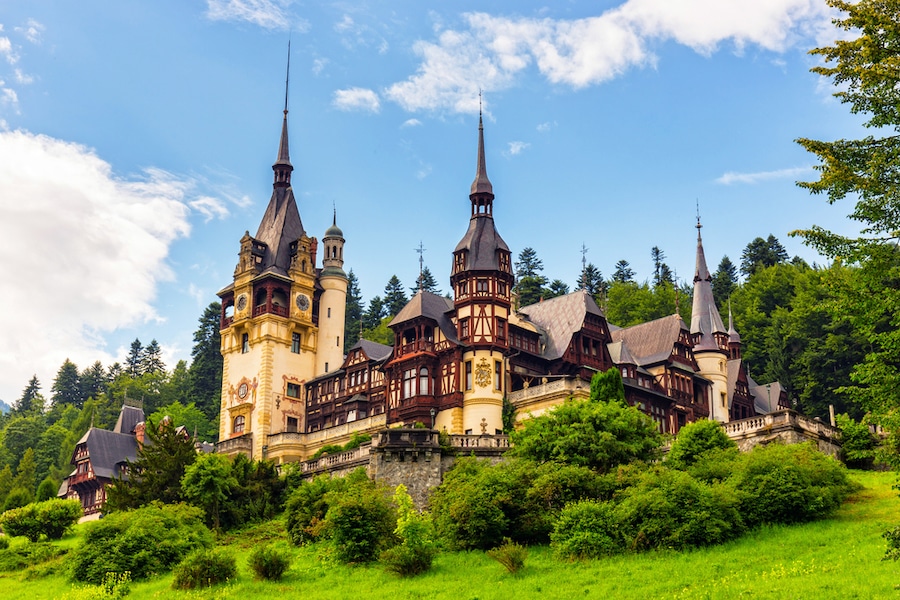
Romania, a land where ancient castles whisper tales of Dracula, where the Carpathian Mountains pierce the sky, and where vibrant traditions dance in picturesque villages, offers a travel experience unlike any other. This captivating country, nestled in Southeastern Europe, is a mosaic of history, breathtaking natural beauty, and a warm, welcoming culture. From the bustling energy of its capital to the serene tranquility of its rural heartlands, Romania beckons explorers seeking authenticity and adventure.
A Glimpse into Romania’s Rich History:
Romania’s history is a compelling narrative woven from the threads of Dacian tribes, Roman conquest, medieval principalities, Ottoman influence, and the dramatic events of the 20th century. The country’s name itself derives from the Roman Empire, a testament to its deep historical roots.

Related Articles about Romania: A Tapestry of Legends, Landscapes, and Unforgettable Experiences:
- Australia Unveiled: A Comprehensive Guide to the Land of Sun, Sand, and Spirit
- Georgia: Where Ancient History Meets Breathtaking Landscapes
- Germany: A Tapestry of Timeless Charm and Modern Marvels
- The Land of a Thousand Lakes and Endless Wonders: Unveiling the Magic of Finland
- The Rainbow Nation Beckons: Your Ultimate Travel Guide to South Africa
- Dacian and Roman Legacy: The ancient Dacians, a Thracian people, inhabited the land for centuries before their kingdom was conquered by the Roman Empire in the 2nd century AD. The Roman influence is still evident in archaeological sites like the ruins of Ulpia Traiana Sarmizegetusa and the monumental Adamclisi Tropaeum.
- Medieval Principalities: Following the withdrawal of the Romans, the region was shaped by various migrating peoples. Eventually, the medieval principalities of Wallachia, Moldavia, and Transylvania emerged. This era is immortalized in the legends of Vlad the Impaler, the inspiration for Bram Stoker’s Dracula, whose imposing castles still stand as testaments to his power and the turbulent times.
- Ottoman and Austro-Hungarian Eras: For centuries, Wallachia and Moldavia were under Ottoman suzerainty, while Transylvania was largely under Hungarian and later Austro-Hungarian rule. This period brought a rich cultural exchange, evident in architecture, cuisine, and traditions.
- The Birth of Modern Romania: In 1859, the principalities of Wallachia and Moldavia united to form the basis of modern Romania. The country gained full independence in 1877 and experienced a period of growth and development in the early 20th century.
- The 20th Century and Beyond: Romania endured the two World Wars and a challenging communist regime under Nicolae Ceaușescu, culminating in the 1989 revolution. Since then, Romania has embraced democracy and undergone significant economic and social transformations, becoming a member of the European Union in 2007.
Top Attractions: Unveiling Romania’s Treasures:
Romania’s diverse landscapes and rich history have blessed it with an abundance of remarkable attractions.

- Bucharest: The "Little Paris" and Beyond: Romania’s vibrant capital is a city of contrasts. Explore the colossal Palace of the Parliament, the second-largest administrative building in the world, a stark reminder of the communist era. Wander through the charming Old Town (Centrul Vechi), a labyrinth of cobblestone streets lined with historic buildings, lively cafes, and eclectic bars. Discover the architectural gems of Calea Victoriei, including the Romanian Athenaeum and the National Museum of Art. For a dose of history, visit the Village Museum (Muzeul Satului), an open-air ethnographic museum showcasing traditional Romanian village life.
- Transylvania: Land of Castles and Legends: This iconic region is synonymous with Dracula and medieval charm.
- Bran Castle: Perched dramatically on a rocky outcrop, Bran Castle is famously associated with Bram Stoker’s Dracula. While its historical connection to Vlad the Impaler is tenuous, its imposing architecture and atmospheric setting are undeniable.
- Peleș Castle (Sinaia): A masterpiece of Neo-Renaissance architecture, Peleș Castle was the summer residence of the Romanian royal family. Its opulent interiors, intricate woodwork, and stunning mountain setting make it a must-visit.
- Corvin Castle (Hunyad Castle): A magnificent Gothic fortress with a drawbridge and imposing towers, Corvin Castle is one of the largest castles in Europe and a truly awe-inspiring sight.
- Sighișoara Citadel: A UNESCO World Heritage Site, Sighișoara is one of the best-preserved inhabited citadels in Europe. Its colorful medieval houses, cobblestone streets, and clock tower offer a step back in time. Vlad the Impaler was born here, and his birthplace is now a restaurant.
- Brașov: A picturesque city nestled at the foot of the Carpathian Mountains, Brașov boasts a charming Old Town with the Black Church, Council Square, and the historic Rope Street. It’s also a gateway to hiking and winter sports.
- Maramureș: The Land of Wooden Churches and Timeless Traditions: This northeastern region is a living museum of traditional Romanian rural life. Explore its numerous wooden churches, many of which are UNESCO World Heritage Sites, characterized by their tall spires and intricate carvings. Witness traditional crafts, listen to folk music, and experience the genuine hospitality of its people. Don’t miss the Merry Cemetery (Cimitirul Vesel) in Săpânța, a unique cemetery where gravestones are adorned with colorful, humorous epitaphs and paintings depicting the lives of the deceased.
- The Painted Monasteries of Bucovina: Another UNESCO World Heritage Site in northeastern Romania, these monasteries are renowned for their stunning exterior frescoes depicting biblical scenes, historical events, and religious figures. Voroneț, Moldovița, Sucevița, and Humor are among the most famous.
- Danube Delta: Europe’s second-largest and best-preserved delta, the Danube Delta is a UNESCO World Heritage Site and a paradise for birdwatchers and nature lovers. Explore its vast network of waterways, reed beds, and lakes by boat, spotting pelicans, cormorants, and a myriad of other species.
- The Carpathian Mountains: Offering breathtaking scenery and ample opportunities for outdoor adventure, the Carpathians are a playground for hikers, climbers, and skiers. Explore national parks like Retezat and Piatra Craiului.
- Sibiu: A charming medieval city in Transylvania, Sibiu is known for its picturesque squares, colorful houses with "eyes" (dormer windows), and its vibrant cultural scene. It was a European Capital of Culture in 2007.
- Timișoara: A multicultural city in western Romania, Timișoara is known for its elegant squares, Art Nouveau architecture, and its pivotal role in the 1989 revolution.
Travel Tips for an Unforgettable Romanian Adventure:
To make your Romanian journey smooth and enjoyable, consider these practical tips:
- Visa Requirements: Check visa regulations for your nationality well in advance of your trip. As Romania is part of the EU, many nationalities may not require a visa for short stays.
- Currency: The national currency is the Romanian Leu (RON). Euros are widely accepted in tourist areas, but it’s advisable to have local currency for smaller purchases. ATMs are readily available in cities.
- Language: Romanian is the official language. English is widely spoken in tourist areas, hotels, and by younger generations. Learning a few basic Romanian phrases like "Bună ziua" (Hello), "Mulțumesc" (Thank you), and "Scuze" (Excuse me) will be greatly appreciated.
- Safety: Romania is generally a safe country for tourists. Exercise common sense precautions as you would in any other country, especially in crowded areas, and be aware of your surroundings.
- Tipping: Tipping is customary in restaurants (around 10-15%), for taxi drivers, and for hotel staff.
- Driving: If you plan to drive, be aware that road conditions can vary, especially in rural areas. Driving laws are similar to other European countries.
- Respect Local Customs: Be mindful of local customs, especially when visiting religious sites. Dress modestly when entering churches and monasteries.
- Connectivity: Wi-Fi is widely available in hotels, cafes, and public spaces. Consider purchasing a local SIM card for affordable data access.
- Food and Drink: Romanian cuisine is hearty and delicious, featuring influences from Hungarian, Turkish, and Slavic traditions. Don’t miss trying sarmale (cabbage rolls), mămăligă (polenta), ciorbă (sour soups), and delicious pastries. Romania also produces excellent wines.
Accommodation Options: From Castles to Cozy Guesthouses:
Romania offers a diverse range of accommodation to suit every budget and preference:
- Hotels: You’ll find a wide array of hotels in cities and major tourist destinations, ranging from luxury five-star establishments to comfortable three-star options.
- Guesthouses (Pensiuni): For a more authentic experience, particularly in rural areas and smaller towns, pensiuni offer charming and often family-run accommodations. They provide a glimpse into local life and often serve delicious homemade meals.
- Apartments and Vacation Rentals: Platforms like Airbnb offer a great selection of apartments and entire homes, ideal for longer stays or for those seeking more space and self-catering facilities.
- Hostels: Budget travelers will find numerous hostels in larger cities, offering dormitory beds and private rooms.
- Unique Stays: For a truly memorable experience, consider staying in a beautifully restored castle or a traditional wooden house in Maramureș.
Transportation: Navigating Romania’s Charm:
Getting around Romania is relatively straightforward, with several transportation options:
- By Air: Romania has several international airports, with the main hub being Henri Coandă International Airport (OTP) in Bucharest. Domestic flights connect major cities, but train and bus travel are often more scenic and cost-effective for shorter distances.
- By Train: The Romanian railway network (CFR Călători) connects most major cities and towns. While some routes are modern and efficient, others can be slower. Trains are a comfortable and scenic way to travel, especially for longer distances. Booking tickets in advance is recommended, especially for popular routes.
- By Bus: Intercity buses are a popular and often more frequent option than trains for certain routes. They can be a cost-effective way to travel between smaller towns.
- By Car: Renting a car offers the most flexibility and allows you to explore off-the-beaten-path destinations at your own pace. Be prepared for varying road conditions and driving styles.
- Within Cities: Cities have public transportation systems including buses, trams, and trolleys. Taxis are also readily available, but it’s advisable to use reputable companies or ride-sharing apps.
Best Time to Visit Romania:
Romania’s appeal varies with the seasons, offering distinct experiences throughout the year:
- Spring (April-May): This is a beautiful time to visit as nature awakens. Temperatures are mild, wildflowers bloom, and the landscapes are vibrant. It’s ideal for exploring cities and hiking in lower altitudes.
- Summer (June-August): The peak tourist season, summer offers warm to hot weather, perfect for exploring outdoor attractions, enjoying festivals, and visiting the Black Sea coast. Expect larger crowds and higher prices.
- Autumn (September-October): Autumn is arguably the most enchanting season. The forests transform into a riot of color, the weather is crisp and pleasant, and the harvest season brings delicious local produce. It’s excellent for hiking and cultural exploration.
- Winter (November-March): For winter sports enthusiasts, Romania offers excellent skiing and snowboarding opportunities in the Carpathian Mountains. Cities are adorned with festive lights, and the snow-covered landscapes create a magical atmosphere. However, some attractions may have reduced opening hours, and travel can be affected by weather conditions.
Conclusion:
Romania is a country that captivates the soul and ignites the imagination. It’s a destination where history breathes through ancient stones, where legends dance in moonlit forests, and where the warmth of its people makes you feel instantly at home. Whether you’re drawn to the grandeur of its castles, the tranquility of its natural landscapes, or the richness of its cultural heritage, Romania promises an unforgettable journey filled with discovery and wonder. So pack your bags, embrace the spirit of adventure, and prepare to be enchanted by the timeless magic of Romania.





